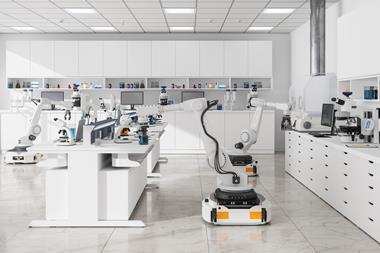How can an atomic system (like you or me) be conscious?
How can an atomic system (like you or me) be conscious? Atoms only have mass and charge, and no aggregate of them should be ever aware of anything.
Chemists used to evade this argument by invoking ’vital force’, an enigmatic component of once-living matter. Then in 1828 Wöhler discredited vital force by making an organic substance (urea) from an inorganic one (ammonium cyanate).
Since then, we have all had to wonder how any chemical system can be conscious - for human brains certainly are. And in that wonderful film 2001: A Space Odyssey, Arthur C Clarke portrayed a conscious computer, Hal. Sadly, conscious computers continue to evade technology. At the moment only living chemical machines, like ourselves and the higher animals, can claim to be conscious.
Suppose we assume that a material object becomes conscious by making some sort of weakly-coupled contact with a spiritual world, which occupies the same space as the material one. What happens if we investigate this theory scientifically? Our world is warm, at something like 300K, but the spiritual world may be much colder (which is why a ghost cools the room). My own guess couples the spiritual world to the cosmic microwave background of about 3K. I recall the zeroth law of thermodynamics, which is far too fundamental to come up in any scientific course of lectures. It merely says that everything has a temperature - and asserts that any two objects in ’thermal contact’ should equilibrate to a common temperature. No temperature-difference at all can exist between them.
So here’s an experiment. Imagine an object with some sort of spiritual content. It might be a holy relic, or a brain biochemical; but it will be slightly coupled into the cold spiritual world, and will conduct heat into that world. So if you attach it to a purely material reference object, it will be a bit colder. The two-fold specimen would persistently maintain a small difference of temperature and would disobey the zeroth law of thermodynamics. Now we chemists are used to measuring small differences of temperature - depressions of freezing-point, elevations of boiling point, heats of reaction and so on. Indeed, the classic Beckmann thermometer (Chemistry World, December 2007, p73) was invented for just this job. Good modern instrumentation should be able to spot an even tinier difference in temperature.
According to this theory, which chemical substances are most likely to disobey the zeroth law of thermodynamics? The first ones to try would be chloroform, ether, nitrous oxide, alcohol - intoxicants and anaesthetics all, but mentioned in William James’s 1902 classic, Varieties of religious experience, as possibly opening the door to the theological domain. We should also study peyote, produced by an American cactus, a substance which has a whole church devoted to its spiritual effects. And brain biochemicals, neurotransmitters and the like, deserve a scan. Yet many effective mental agents, such as the tranquillisers iproniazid and chlordiazepoxide, were discovered by sheer accident. It might be best to study organic substances pretty much at random, but to follow up any worthwhile lead. The ideal agent would have little anaesthetic effect, but would challenge the most hard-boiled materialist by a sudden exposure to the spiritual world. Once again, as with the invention of anaesthetics and tranquillisers themselves, biochemistry would transform human life! The product might be called Theological Prozac.












No comments yet